Background
Charles Roy Lancaster was born in 1937, in Farnworth, Bolton, United Kingdom.

Roy Lancaster at a book signing, a few days after this post was first published.
Roy Lancaster Sharing New Book and Plant Knowledge at Hillier Garden Centres.
Roy displays his book ' My Life with Plants. '
Roy Lancaster and Derry Watkins.
An Evening with Roy Lancaster.
A cracking pair: Roy Lancaster & Carol Klein.














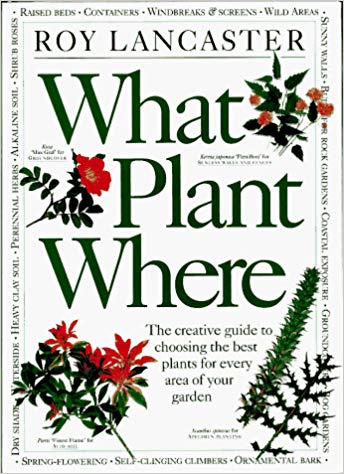
(Recommends perennials, climbers, shrubs, conifers, and tr...)
Recommends perennials, climbers, shrubs, conifers, and trees by their characteristics, including size, soil and sunlight requirements, seasonal features, and color.
https://www.amazon.com/gp/product/0789401517/?tag=2022091-20
1997

(A thorough guide to choosing, planting, and maintaining a...)
A thorough guide to choosing, planting, and maintaining a perennial garden includes symbols that indicate each plant's hardiness level, more than five hundred full-color photographs, and height and spread information. Rodale Garden & Newbridge Garden Main.
https://www.amazon.com/gp/product/0789420872/?tag=2022091-20
1997
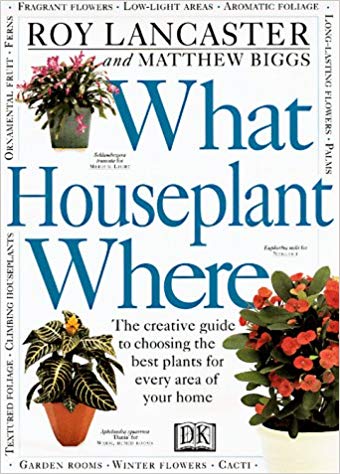
(With more than four hundred beautiful full-color photogra...)
With more than four hundred beautiful full-color photographs, a valuable guide presents a vast array of houseplants designed for various home locations and conditions for year-round gardening. 15,000 first printing.
https://www.amazon.com/gp/product/0789435225/?tag=2022091-20
1998
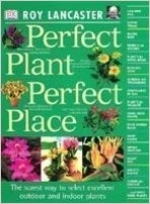
(This is the American Edition. Conents of this book includ...)
This is the American Edition. Conents of this book include: 1. Introduction, 2. How this book works, 3. Outdoor plants, 4. Plant finder, 5. Soil and aspect, 6. Perennials, 7. Climbers, 8. Shrubs, 9. Conifers, 10. Trees, 11. Indoor plants, 12. Index, 13. Acknowledgements
https://www.amazon.com/gp/product/0756604761/?tag=2022091-20
2004
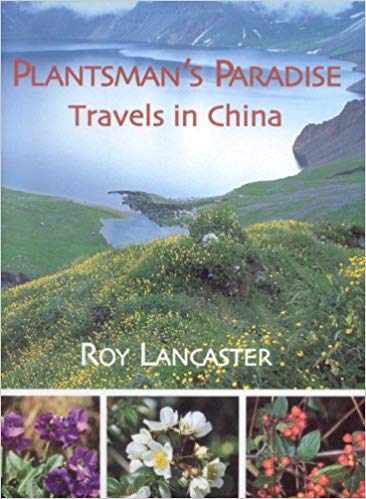
(This book successfully combines a most enjoyable and deta...)
This book successfully combines a most enjoyable and detailed account of the well-known author's many journeys through China. First and foremost, Travels in China provides a practical assessment of the plants that are either of ornamental merit or botanical interest to gardeners in the West.
https://www.amazon.com/gp/product/1851495150/?tag=2022091-20
2006
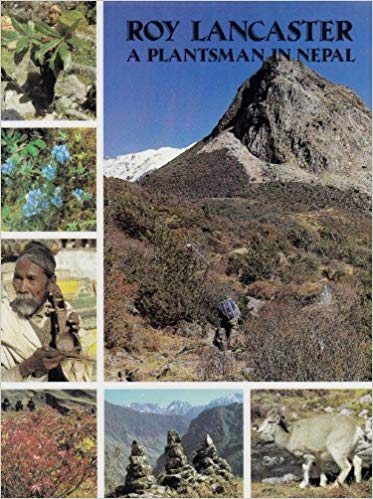
(In 1971 a small group of botanists and horticulturalists ...)
In 1971 a small group of botanists and horticulturalists organised a three-month expedition to the Upper Arun Valley region of eastern Nepal, to collect seed and specimens of ornamental and economic plants, both wild and cultivated. This book chronicles the travels of the three-man horticultural team. The journey often followed little known tracks through some of the world s most dramatic and lonely mountain terrain.
https://www.amazon.com/gp/product/1851491791/?tag=2022091-20
2007
Charles Roy Lancaster was born in 1937, in Farnworth, Bolton, United Kingdom.
Lancaster studied for two years at University of Cambridge Botanic Gardens.
When Lancaster was 15, his father died, and he had to leave school and get a job to help support his family. He got a job in a local park, working in the gardens. The two elderly gardeners taught him what they knew; one of them could identify two thousand different roses by sight. They insisted that in addition to pruning and propagation techniques, he learned Latin names for all the plants, and despite his protests that he had never studied Latin in school, they told him to come to work a half-hour early each day, so they could tutor him. On his long walk to work, he played games with himself, identifying birds and plants at a glance.
In the mid-1950s, Lancaster served in the British Army in Malaysia, but his service did not interrupt his obsession with plants and nature. On jungle patrol, he collected plants, insects, and snakes, keeping one of his ammunition pouches empty in order to leave room for specimens. During his tour of duty, he carefully collected over one thousand plants, pressed them under his mattress, and sent them to Kew Gardens in England and the Raffles Museum in Singapore so that professionals could identify them. After he was reassigned to the base, some of his soldier friends continued to collect specimens from the jungle for him.
After his service, he returned to the Parks Department in Bolton, but wanted greater challenges, and moved on. He spent two years working in the Cambridge Botanic Garden, learning from the director. He then went to work for Harold Hillier, founder of Hillier Nurseries, who was looking for someone to catalog his collection and to ferret out misidentified or misplaced specimens. Lancaster, who was twenty-five, got the job and spent almost twenty-five years working at the Hillier Arboretum, where he became curator before retiring in 1986. This arboretum is one of the largest and most complete in the world, and Lancaster still lives nearby and often visits the trees and shrubs he planted there, some as many as 30 years ago.
Lancaster has always been fascinated by exotic places and their rare plants, and in 1971 was offered the opportunity to join a plant-hunting expedition to eastern Nepal. He told Elliott that these five months of exploring rain forests and high mountains were “a magical experience,” and since then he has traveled to China, Indonesia, Ecuador, Chile, several other places in South America, and many locations in the United States and Canada. For the past twenty years, he has led plant-hunting tours to exotic locations twice each year.
Lancaster wrote about his Nepal experiences in A Plantsman in Nepal and includes beautiful photographs of Nepalese people, places, and plants. In addition to his commentary on plants, including an unusual snowball plant and a rare golden edelweiss that cannot be cultivated. Lancaster also includes asides on the history of the region, tales of plant-hunters of the past, and the hardships they endured.
Each month he writes a column for the Royal Horticultural Society magazine, and he grows all profiled plants before he writes about them. In 1999, one of these plants was bamboo, which, he wrote, was “for gardeners with unlimited space.”
Lancaster was one of the first westerners allowed to enter China after the Chinese Cultural Revolution, and he was instrumental in renewing and strengthening ties between Chinese and western horticulturalists. As a result of his work, many Chinese plants have found their way to western gardens - some familiar, and some previously unknown. Lancaster includes anecdotes about the people and culture of China, as well as descriptions of someone a thousand plants desirable for gardening. In addition to contemporary color photographs, the book also includes old black-and-white photos taken by early twentieth-century plant hunters.
In 1988, Lancaster was awarded the Victoria Medal of Honour by the Royal Horticultural Society. In the 1999 New Year, e was appointed Officer of the Order of the British Empire (OBE) "for services to horticulture". In the 2014 Birthday , he was promoted to Commander of the Order of the British Empire (CBE) "for services to horticulture and charity".
(In 1971 a small group of botanists and horticulturalists ...)
2007(A thorough guide to choosing, planting, and maintaining a...)
1997(With more than four hundred beautiful full-color photogra...)
1998(Recommends perennials, climbers, shrubs, conifers, and tr...)
1997(This book successfully combines a most enjoyable and deta...)
2006(This is the American Edition. Conents of this book includ...)
2004(Physical description; 516p. Subjects; Plants - China. Pla...)
1989In his manuals What Plant Where?, What Perennial Where?, and What Houseplant Where?, Lancaster discusses many kinds of plants and the conditions where they will thrive. Conditions include many types of soil, amounts of sun, degrees of moisture, climate, size and shape of the plant, and seasonal features, among many other factors. Gardeners can look up each plant and see where it will thrive, or read about a specific condition and see a list of plants appropriate for it. Each plant is briefly described and beautifully illustrated.
Lancaster is a member of the Royal Horticultural Society.
Lancaster, who has written several world-renowned books on horticulture, was never trained as a botanist, and did not even attend college. He grew up in a poor family in Bolton, and industrial city near Manchester in England. As a child, despite his industrial surroundings, he grew up with three obsessions: birds, plants, and steam trains, and he used to combine all three by taking a train ride over the limestone hills to Silvercombe, a town on Morecombe Bay. While on the train, he hung out the window, watching for other locomotives and also scanning the railway line for plants he didn’t know. When he saw one, he got off at the next station and walked back along the tracks until he found it. One of the first he discovered was a Mexican tobacco plant, inexplicably growing wild near the tracks.
Quotes from others about the person
“It’s safe to say that there are very few other people with Roy Lancaster’s breadth of knowledge about plants from all over the world, or his unstoppable energy as a plant hunter, horticulturalist, and writer-lecturer. Producing books with one hand, gardening with the other, and scarcely pausing between giving talks and leading tours to out-of-the-way parts of the world, Roy Lancaster is a one-man whirlwind of botanical enthusiasm.” - Charles Elliott
“Lancaster has a happy knack for making the past come alive, and he shows us where many beloved plants belong in the ornate and ongoing tapestry of plants and history that is contemporary gardening.”
Lancaster is married to Sue Lancaster. They have two children: Edward and Holly.
